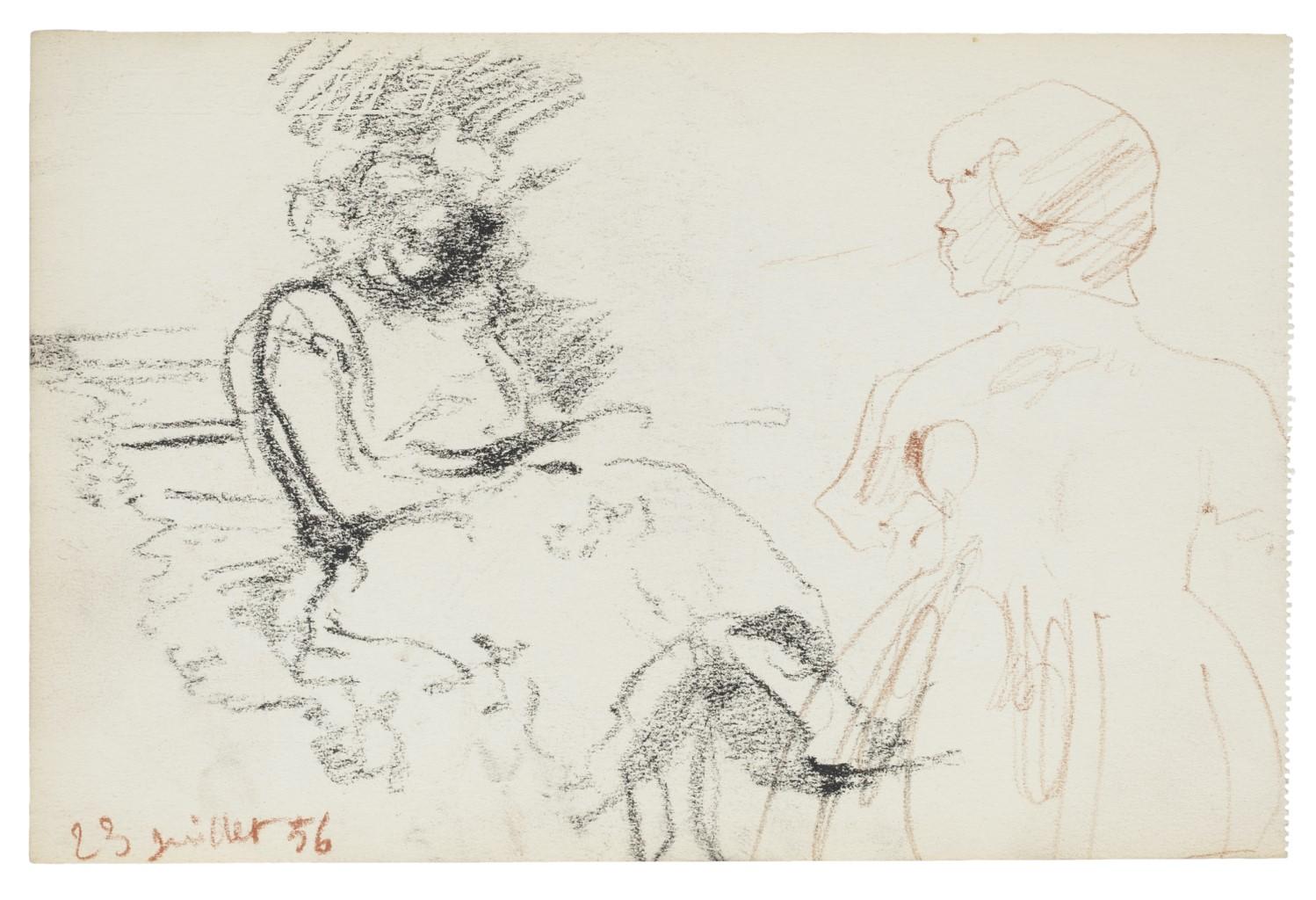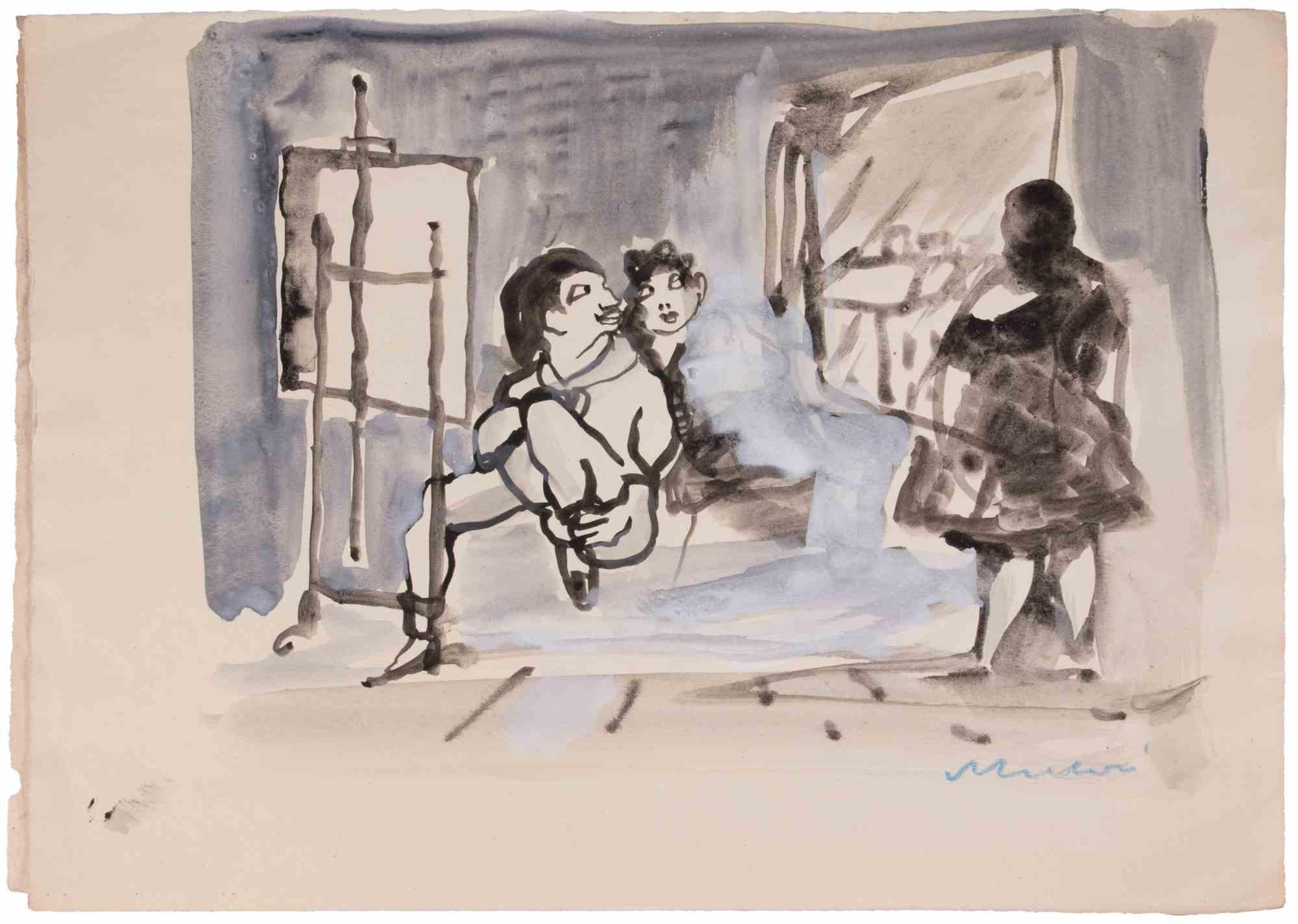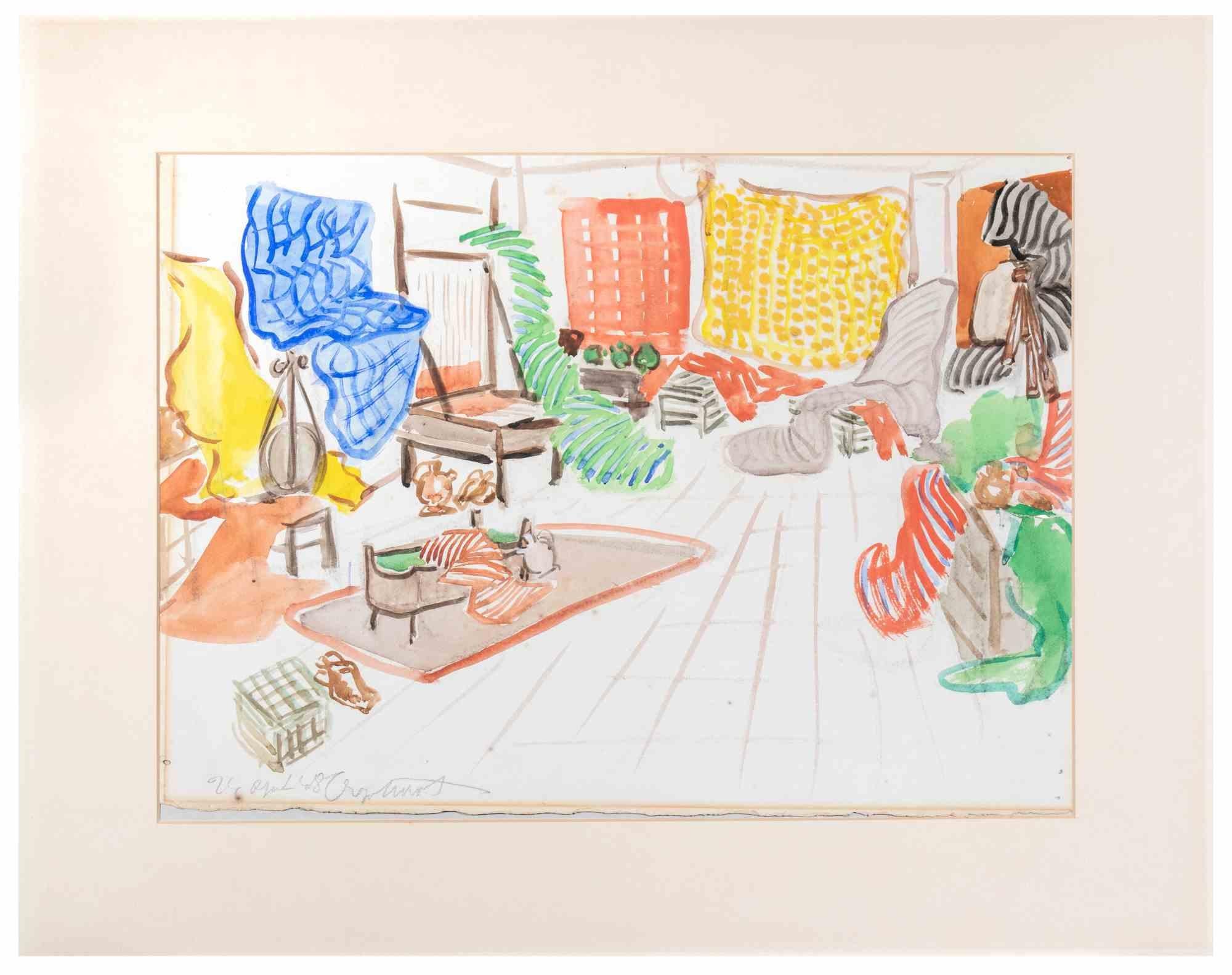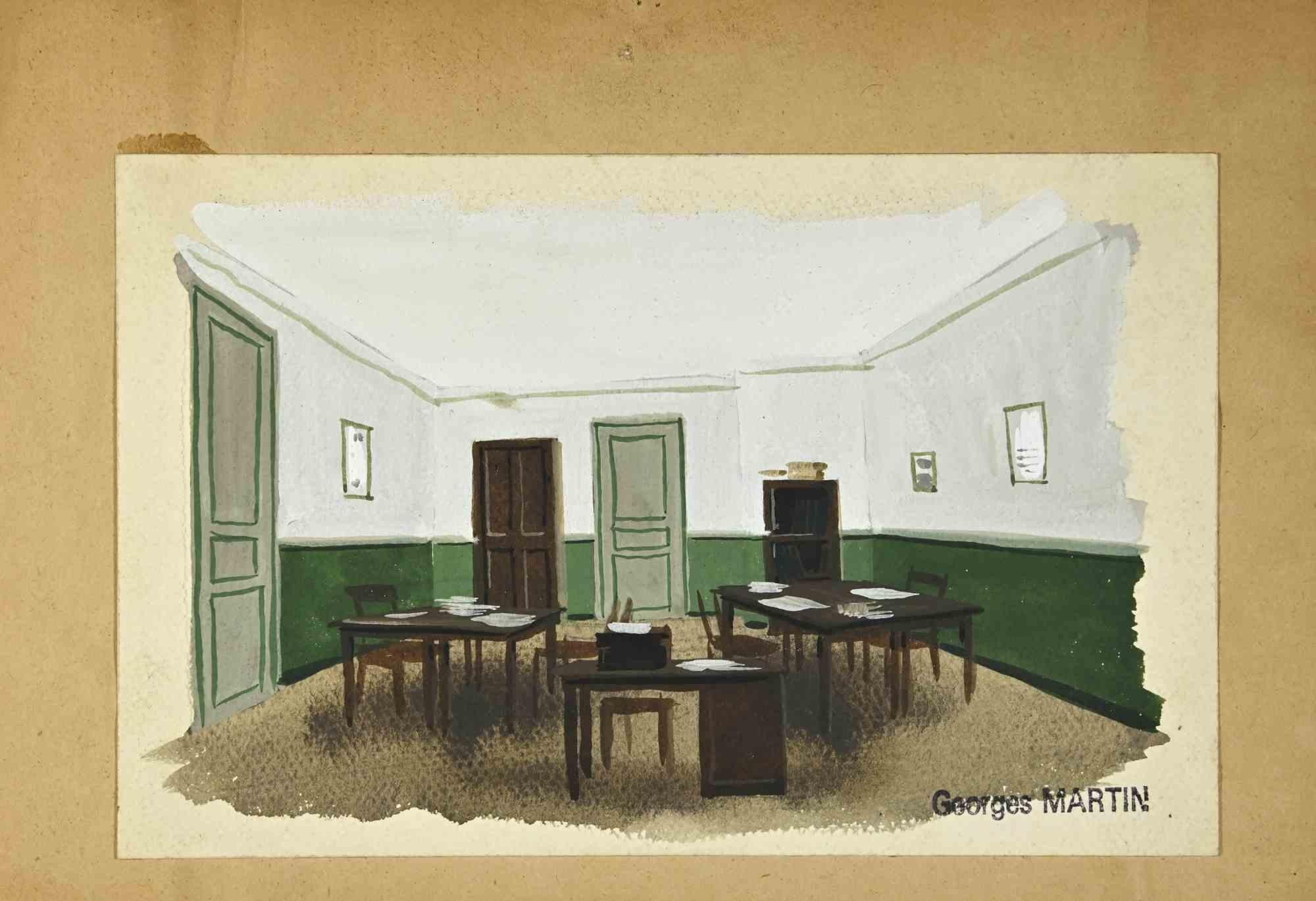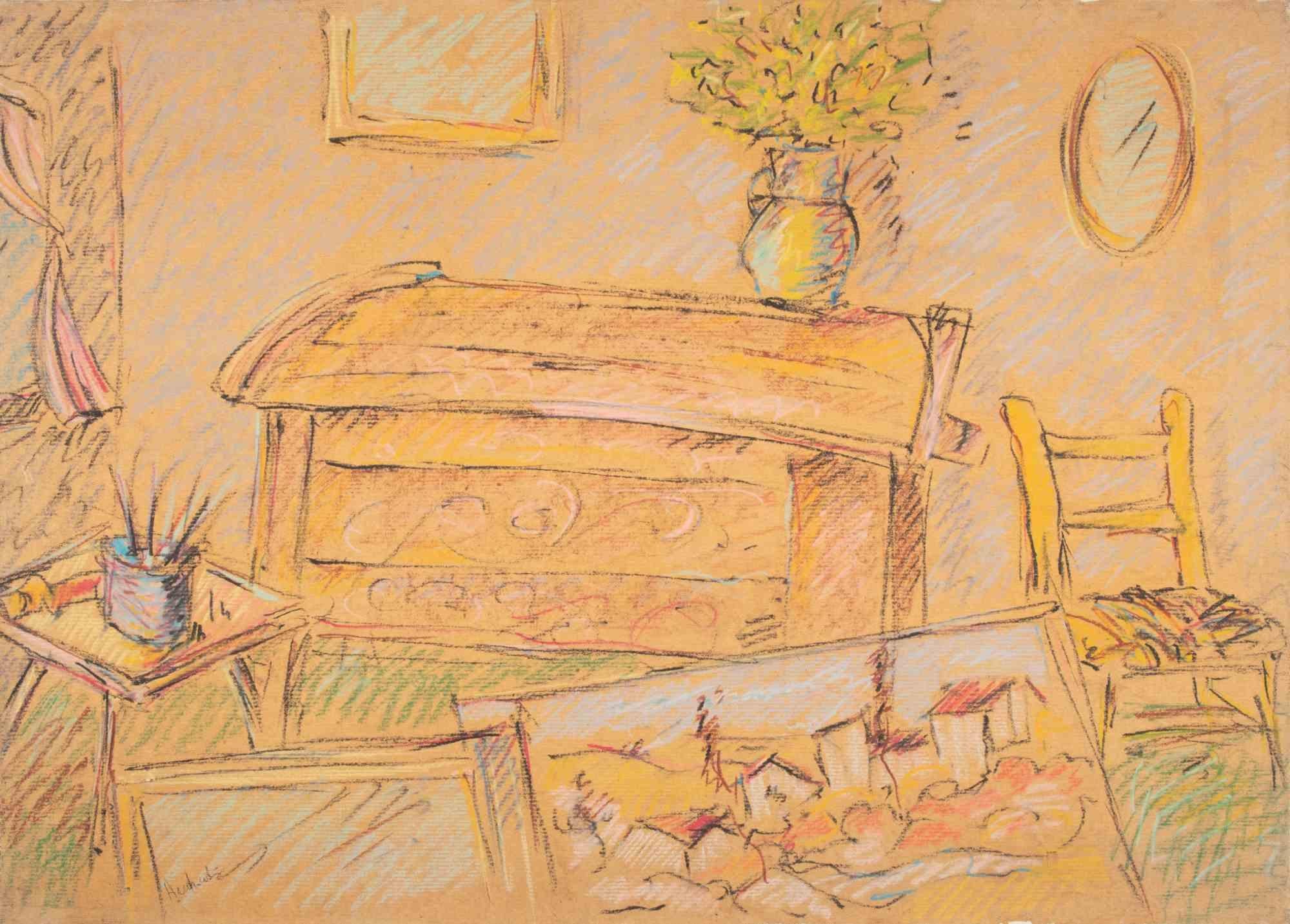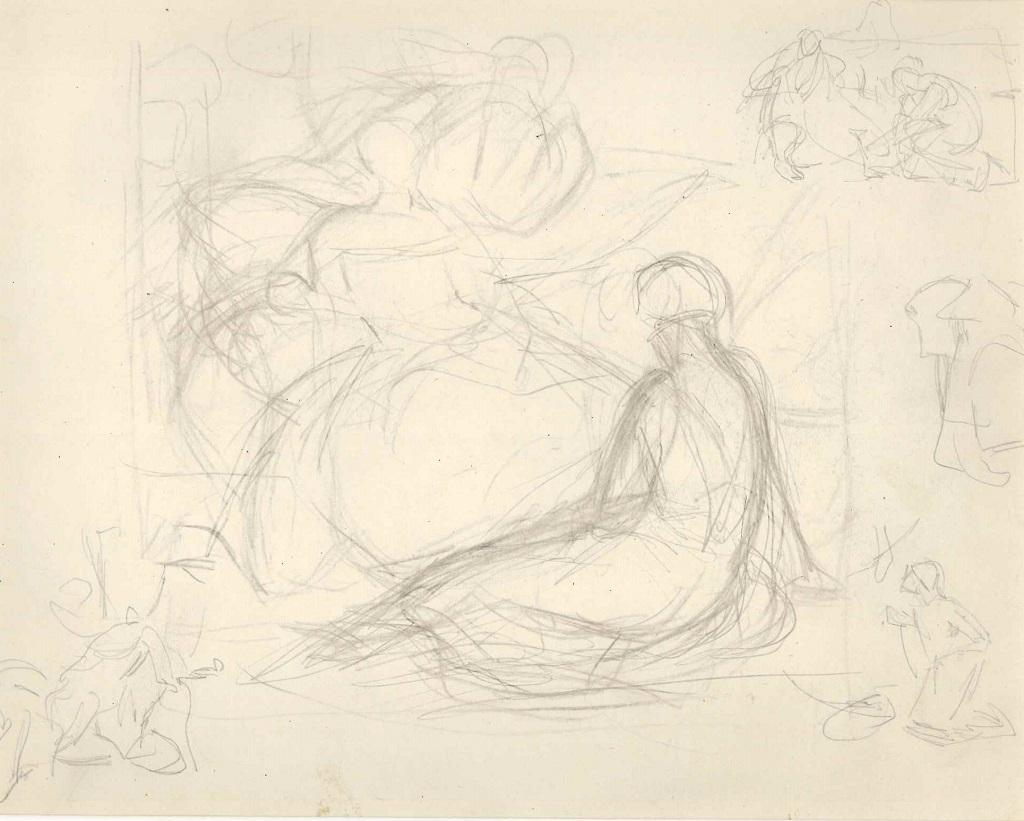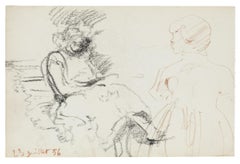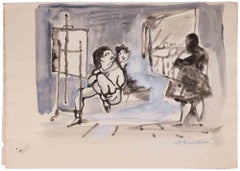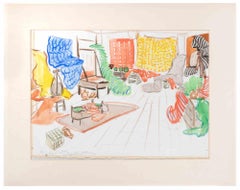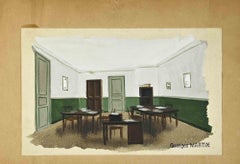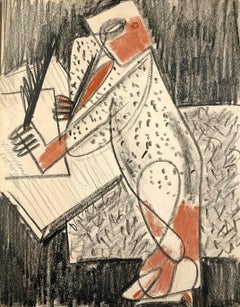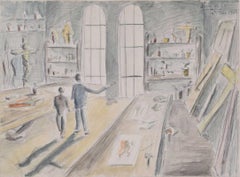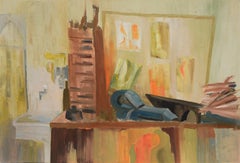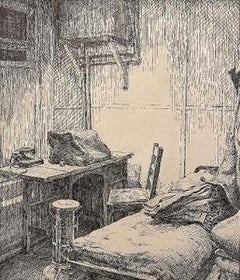Items Similar to Artist's Studio - Drawing - 1941
Want more images or videos?
Request additional images or videos from the seller
1 of 2
UnknownArtist's Studio - Drawing - 19411941
1941
$358.31
£266.43
€300
CA$503.26
A$554.05
CHF 283.18
MX$6,612.77
NOK 3,605.45
SEK 3,373.90
DKK 2,285.64
About the Item
Artist's Studio is a modern artwork realized by an unknown artist in 1941.
Watercolor on paper.
Dated and Hand-signed, illegible.
Good conditions.
- Creation Year:1941
- Dimensions:Height: 8.27 in (21 cm)Width: 10.63 in (27 cm)Depth: 0.04 in (1 mm)
- Medium:
- Movement & Style:
- Period:
- Framing:Framing Options Available
- Condition:Insurance may be requested by customers as additional service, contact us for more information.
- Gallery Location:Roma, IT
- Reference Number:Seller: T-1482221stDibs: LU650314304342
About the Seller
4.9
Platinum Seller
Premium sellers with a 4.7+ rating and 24-hour response times
1stDibs seller since 2017
7,753 sales on 1stDibs
Typical response time: 2 hours
- ShippingRetrieving quote...Shipping from: Grasse, France
- Return Policy
Authenticity Guarantee
In the unlikely event there’s an issue with an item’s authenticity, contact us within 1 year for a full refund. DetailsMoney-Back Guarantee
If your item is not as described, is damaged in transit, or does not arrive, contact us within 7 days for a full refund. Details24-Hour Cancellation
You have a 24-hour grace period in which to reconsider your purchase, with no questions asked.Vetted Professional Sellers
Our world-class sellers must adhere to strict standards for service and quality, maintaining the integrity of our listings.Price-Match Guarantee
If you find that a seller listed the same item for a lower price elsewhere, we’ll match it.Trusted Global Delivery
Our best-in-class carrier network provides specialized shipping options worldwide, including custom delivery.More From This Seller
View AllStudies - Original Drawing - 20th Century
Located in Roma, IT
"Studies" is an original drawing in tempera on paper, realized by an Anonymous French Artist of the XX Century .
The state of preservation of the artwork is very good.
Sheet dimens...
Category
20th Century Modern Figurative Drawings and Watercolors
Materials
Charcoal, Oil Pastel
The Painter's Studio - Drawing by Mino Maccari - 1955 ca.
By Mino Maccari
Located in Roma, IT
Watercolor on paper realized by Maccari in 1955 ca.
Hand signed in oil pastel lower right.
Very good condition.
Category
1950s Modern Figurative Drawings and Watercolors
Materials
Watercolor
My Room - Drawing - 1948
Located in Roma, IT
My Room is a Drawing on paper realized by an Anonymous artist in the 1948.
Watercolour on paper.
Hand-signed, illegible, dated.
Good conditions. Included a Passepartout: 47 x 59 c...
Category
1940s Modern Figurative Drawings and Watercolors
Materials
Watercolor
The Studio - Drawing by Georges Martin - Mid 20th century
Located in Roma, IT
The Studio is a drawing in watercolor on paper realized in the mid-20th century by Georges Martin.
Stamped on the lower.
The state of preservation is good with foxing on applied p...
Category
Mid-20th Century Contemporary Figurative Drawings and Watercolors
Materials
Pencil, Watercolor
Interior - Drawing - 1990s
Located in Roma, IT
Pencil and pastel on paper mounted on canvas.
Hand signed, undreadable. Includes a contemporary wooden frame.
Very good condition.
Category
1990s Contemporary Figurative Drawings and Watercolors
Materials
Pastel, Pencil
Sketched Scene - Original Drawing - Early 20th Century
Located in Roma, IT
Sketched Scene is an original artwork realized by an Anonymous French artist in the first years of the 20th century.
Pencil on paper. Cardboard passepart...
Category
Early 20th Century Modern Figurative Drawings and Watercolors
Materials
Paper, Pencil
You May Also Like
A Dynamic 1945 Mid-Century Modern Cubist Studio Scene, Artist Sketch Class
By Harold Haydon
Located in Chicago, IL
A Dynamic, 1945 Mid-Century Modern Cubist Studio Scene, Artist's Sketch Class by Noted Chicago Painter, Harold Haydon (Am. 1909-1994). Artwork size: 11 x 8 1/2 inches, unframed, mo...
Category
Mid-20th Century Cubist Abstract Drawings and Watercolors
Materials
Paper, Charcoal, Pastel
Artist's Studio, Watercolour Painting by Jane Gray
Located in London, GB
We acquired a series of works from Jane Gray's studio. To find more scroll down to "More from this Seller" and below it click on "See all from this seller." ...
Category
Late 20th Century Modern Drawings and Watercolor Paintings
Materials
Watercolor
The Artist Studio - Original Modernist on Artist Board
Located in Soquel, CA
The Artist Studio - Original Modernist on Artist Board
Original modernist oil painting of an artist studio. As the viewer looks forward, a desk sits in front, a sink to the left, wi...
Category
20th Century American Modern Interior Paintings
Materials
Oil, Board
$920 Sale Price
20% Off
The Writer's Retreat, 20th Century British School Pen and Ink
By Modern British
Located in London, GB
British School
1940's
The Writer's Retreat
Pen & ink
Image size: 10 1/2 x 9 inches
Hand made frame and mount
Category
20th Century Interior Drawings and Watercolors
Materials
Paper, Graphite
William Norman Gaunt (1918-2001) - Framed Watercolour, The Artist's Studio
By William Norman Gaunt
Located in Corsham, GB
William Norman Gaunt (1918-2001), watercolour on paper. A lovely interior scene with life model seated in the artist's studio. Signed lower right. Well presented in a black and gilt ...
Category
Mid-20th Century Interior Drawings and Watercolors
Materials
Watercolor
Bernadette Kelly (b.1933) - 20th Century Oil, Artist's Studio
By Bernadette Kelly
Located in Corsham, GB
Unsigned. On board.
Category
20th Century Interior Paintings
Materials
Oil
More Ways To Browse
New Orleans Pottery
Peggy Cove Painting
Rembrandt Student
Soldiers Dream
Vintage Christmas Tree Paintings
Vintage Western Illustrations
Vogue 1939
Blanche Grambs
Charles Moulin
Female Nude Line Painting
Harvey Dinnerstein Art
Louis Emile Adan
Mad Charcoal
Nude Line Drawing Female
Picasso Girl With Dog Print
Sexy Drawing
Woman Figure Original Ink And Pastel Art
1940s Art Deco Drawing
